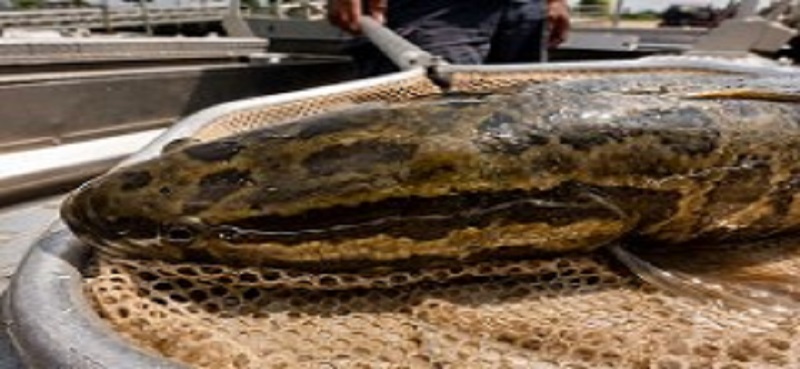Principal Investigator: Melinda Fegler, Jug Bay Wetlands Sanctuary
Co-Principal Investigator: Joshua Newhard, USFWS; Chris Snow, Chesapeake Bay National Estuarine Research Reserve
Years Funded: 2017-2018
Project Description:
The Jug Bay tidal freshwater marshes located near river mile 45 on the Patuxent River are among the most important marshes of this kind in Maryland. It provides habitat for a wide range of species including a rich fish community. Jug Bay is also a component of the Chesapeake Bay National Estuarine Research Reserve System, a program promoting among other things the protection of these important estuarine habitats. Northern Snakehead, Channa argus, was first discovered in Maryland in 2002, but only recently reported in the Patuxent River watershed (Maryland DNR,2012). Local angler reports and sightings have continued to increase and are now common. Information and understanding of the potential impacts of Northern Snakehead within Jug Bay is limited, but its increased presence has created a sense of urgency to control its population. The main objectives of this study are: (1) to start the collection of data to develop a monitoring and management strategy for snakehead within the Jug Bay area, and (2) to test different approaches to control its population. The first goal targets the collection of information about preferred habitat areas (“hotspots”) used by snakehead for reproduction and over-wintering areas. Techniques proposed to gather information include trawling, electrofishing, small motor and paddle boats, stand up paddle board (SUP) and UAS (unmanned aerial systems). Once “hotspots” are identified, the second goal would be to test the effectiveness of different control approaches such as egg and juvenile removals and targeted fishing. Because of the nature of this project, the involvement of multiple partners and community members is fundamental for its success. Outreach will also be an important component of this study, which will include the communication of results to the public, youth outreach events, the engagement of the angler community, and the involvement of the public through a monitoring citizen science program.
Photo credit: EPA

